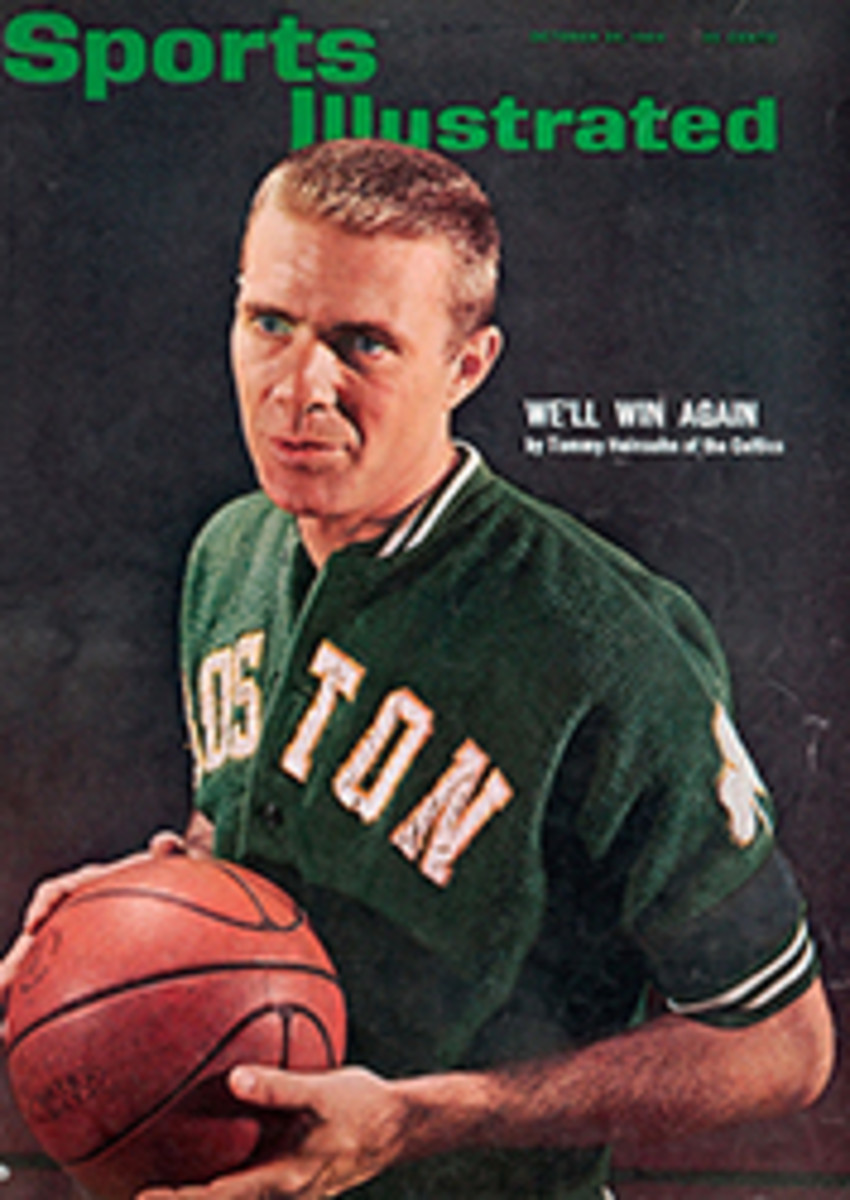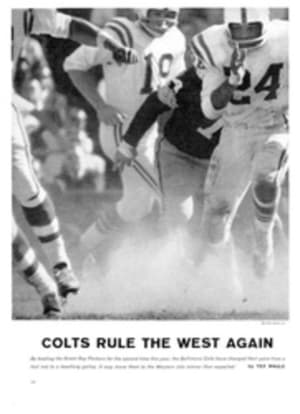
Fast, wet—and almost dead
A minute figure in the lonely vastness of the Bonneville Salt Flats, Craig Breedlove pulled on a blue-and-silver crash helmet and slipped into the cockpit of Spirit of America. His J-47 jet engine shrieked. The blue, three-wheeled projectile spurted forward, like a cork popped from an immense champagne bottle. Salt spray streamed high behind Spirit's 38-foot, four-ton fuselage.
In the pits at each end of Bonneville's 11-mile land-speed course, officials, crewmen and newsmen tensed for walkie-talkie bulletins from the timers' stand at the midcourse measured mile. "He's in the mile," said the walkie-talkie. Seconds later: "He's through the mile." The next flash should have been, "He's popped his chutes," It never came. Breedlove had just pushed the land record to the astonishing speed of 526.28 mph, but now, unable to steer or brake Spirit, he evidently was hurtling toward certain death.
Traveling at perhaps 400 mph, Spirit yawed crazily downcourse. In swift terrible seconds it screamed off the firm speed strip and onto mucky ground adjacent. It hit and splintered a wooden utility pole, shot up an incline, soared over a six-foot dike and finally nosed down, three miles off course, in a canal of salt water 18 feet deep.
Marvelously lucky to be alive, Breedlove might then have drowned but for the dexterity with which he swept off the canopy above him and loosened his safety harness. He floated out of the cockpit and swam 10 feet to the dike. An ambulance arrived. Anxious crewmen gathered.
"My God, I'm glad to be back on land," cried Breedlove, soaking wet but unhurt. To crewman Bill Neely he called, "I'm all right, Baby. What's my speed?" Bill did not know. "I kept thinking," said Breedlove, " 'if I have to go, I may as well have the record.' "
As everyone knew who had followed this month's remarkable jet-set news from Bonneville, Breedlove had already lost and regained the record. First had come Tom Green in Walt Arfons' Wing-foot Express, to beat Breedlove's 1963 record, 407 mph, by 6 mph. Three days later Walt's brother Art, driving the Green Monster, did 434 (SI, Oct. 12). Last Tuesday, 48 hours before his ultimate triumph and near disaster, Breedlove had punched back with a 468.
Struggling now to contain himself, Breedlove heard Chief Timer Joe Petralli report his speed in the measured mile as 539.92. Averaged with his 513.33 mph first run of the day, Petralli said, Breedlove had a new record of 526.28—the first over 500 mph and a phenomenal increase of 119 mph in one year.
A kind of jubilant hysteria seized him. "Do I qualify for the hydro-speed record, too?" he demanded. He embraced his father, Norman, and blurted, "Dad, I bent my machine. Look." Behind them only Spirit's tail was visible. The rest was submerged.
Breedlove had to be coaxed into the ambulance. Still feeling waggish, he took a last look at Spirit and cracked to Driver Ted Gillette, "Let me crank it up and back it out of there."
At Wendover, a dreary hamlet 10 miles distant, it took Breedlove half an hour to convince the doctors that he was absolutely undamaged. By nightfall the jet car had been pulled out and Breedlove's mood had changed to one of untypical soul-searching.
"I had a feeling yesterday," he said, "that I was going to get killed. I couldn't sleep last night. I was nervous today after the first run. But I really hit it on the return. I could have gone 600. Then I lost the steering, before I hit the mile. The Spirit drifted to the right. I came off the power to straighten it out, and then I opened it up again at the far end of the mile."
Attempting to stop, Breedlove pressed a cockpit button to release a small pilot chute, which in turn yanked out his eight-foot main chute. "I felt it come out and tear off the car. I hit the wheel brakes, and nothing happened.
"I heard myself saying, 'Let it slow down, slow down.' I wanted to throw Spirit into a spin, but without steering there was no way. I saw a telephone pole coming right at me. God must have moved it. [The rear axle toppled the pole, the wheel missing by inches.] I saw this big pile of mud, hit it, flew about 35 feet into the air and down into the water. I knew I was going to die then."
But, of course, he did not, and thinking it over he remarked laconically, "You've got to stay cool or you'll get killed in one of these things."
Ecstatic over Breedlove's feat and escape from death, Shell Oil and Goodyear Tire also emerged as big winners. They had backed Breedlove when he was a penniless hot rodder with lofty dreams and by now have some $500,000 invested in Spirit. Their publicity harvest has been rich.
Breedlove's own status has risen prodigiously. At 27, he has five children, a luxurious new home and a swimming pool in Palos Verdes, Calif. and a thriving hot-rod-parts business. Shell and Goodyear retain him as a consultant. Is that reason enough to quit the speed business? Perhaps. Previously Breedlove had referred to 500 mph as "first base." But after reaching that plateau he said he wanted to design a new car capable of sliding "home"—his language for 700 mph and more. He already is pondering the problem of breaking the sound barrier—which would be reached at approximately 720 mph at Bonneville—and how to cope with the shock wave that would ensue. "Maybe," he once said, "when someone goes that fast, I'll be standing on the sidelines just watching."
Maybe. Maybe not. The Arfons boys surely will be back. Donald Campbell of Britain, his turbine-powered Bluebird made obsolete by the jet-setters, has a jet car on the drawing board. But it will surprise no one if Breedlove, despite his brush with death, returns to the Flats next year or the year after, stretching out for "home."
Altogether it was a brisk week in motoring for persistent Americans. At Riverside, Calif., before 83,330 spectators—the largest crowd ever to attend a U.S. road race—the Indy leadfoot, Parnelli Jones, lost the use of his clutch and once caromed his Cooper-Ford off a slower car, yet won the Los Angeles Times Grand Prix and a purse of $14,450. It was his very first sports car race.
As SI Staff Writer Hugh Whall reported, Riverside underscored the recent massive swing to American power in big-time sports car racing and the rise of the track driver in this once-alien branch of the sport. Only one large-displacement car in the 40-car field had a foreign engine (Ferrari); in the rest were Fords, Chevys, Chryslers and Oldsmobiles. Such international road-racing stars as Jimmy Clark, Bruce McLaren and Dan Gurney were present but unable to divert the crowd's fascinated attention from Jones, the 1963 500 winner, and A.J. Foyt, champion in 1961 and 1964.
Foyt appeared in a monster of a car nicely suited to his rugged physique. Called the Hussein I in salute to friendly relations between those two potentates, Texas Oilman John Mecom and King Hussein of Jordan, and built by John Mecom Jr., it possessed a gargantuan Chrylser hemi-head engine and tail pipes like seven-inch rifles. The exhaust blast from those pipes shook the ground and numbed the ears.
Two laps after the Grand Prix start, Parnelli had barged into the lead, but for a time Foyt was a threatening second as the road-racing elite embarrassingly trailed behind. Ultimately, however, a mechanical failure forced him in. Parnelli had said, "I plan to drive with my head, not my foot." His foot won, however. Never out of the lead, he gobbled up the opposition like a hammerhead devouring mullet. A few diehards were unimpressed even when Parnelli boosted the Riverside lap record from 94.5 mph to 98.6. "It can't last," said one. "Those corners will get him yet." At the end, though, only the second-place Chaparral of Roger Penske was on the same lap with Jones. Clark, third in a Lotus-Ford, had been lapped by the flying leader. "I was really abusing my car," Parnelli said later. Not to mention the road-racing men.
At week's end the same field moved on to Laguna Seca, Calif., but this time Parnelli overdid things a bit. Cornering hard, he crashed; his car caught fire. He leaped to safety. The winner: Roger Penske's Chaparral.
PHOTO
MOMENTS AFTER JET NOSED INTO CANAL, BREEDLOVE GESTURES TRIUMPHANTLY

